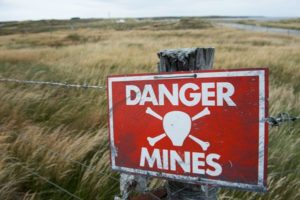History’s most transformational change agents—Jesus of Nazareth, Mahatma Gandhi, Martin Luther King, Jr., and others—engaged consistently in three kinds of activity: they built movements, they spent years working for change, and they demonstrated a deep love for the individuals and societies they were striving to change.
 David Brubaker
David Brubaker
Gifts from Congregations
In March of this year Gallup released survey results showing that fewer than half of Americans belong to a religious congregation—the lowest percentage ever recorded. Yet despite declining participation, congregations offer valuable gifts to their members and their surrounding communities.
Congregational Constants
Every congregation is unique. It is located in a specific place, has a particular history, and evidences a unique culture. Yet dynamics and patterns of behavior recur across denominations, polities, and locations. Following are a set of congregational constants that I’ve observed across religious traditions. Each reader can decide whether they are true of your congregation, and if so, how they might help you to become a more effective leader.
Ratcheting Down: How to Become an Agent of Depolarization

Given the extreme polarization that now infects American society, many wonder what they can do to reduce divisions in families, communities, and congregations. Fortunately, there are strategies any of us can adopt to become agents of depolarization. They range from the intrapersonal (changing attitudes and behaviors) to the systemic (advocating for social change), but all can be implemented at the local level. All the ideas that follow come from When the Center Does Not Hold: Leading in an Age of Polarization, a book I wrote with several colleagues in 2019, published by Fortress Press.
Pandemic, Racial Reckoning, Political Violence, and Congregations

What can a congregation do when a pandemic, a political crisis, and a racial reckoning come knocking at the same time? We were already overwhelmed by a ten-month long pandemic and growing polarization. Then last summer’s nationwide protests against racialized state violence forced many white citizens to begin to come to terms with our country’s 400-year legacy of racial injustice. On January 6, a violent mob stormed the U.S. Capitol, threatening revenge against those they believed had betrayed them. Three major crises at once pose unprecedented challenges for congregational leaders.
5 Suggestions for Managing Conflict in Polarized Contexts

Few individuals are eager to lead in a polarized time. Yet leaders today cannot escape this reality, particularly during an election season. How might congregational leaders navigate the minefields of polarization while safeguarding both their members and their own integrity? The following five suggestions can contribute to successful leadership in polarized contexts.
Christian Nationalism and Congregations

Christian Nationalism is a significant force in American civic life, yet “Christianity” and “Christian Nationalism” are two very different species. The former is a religious movement and the latter is a political one. Yet because many Christians (almost all of them white) have imbibed the tenets of Christian Nationalism, Christian leaders must contend with its presence.



